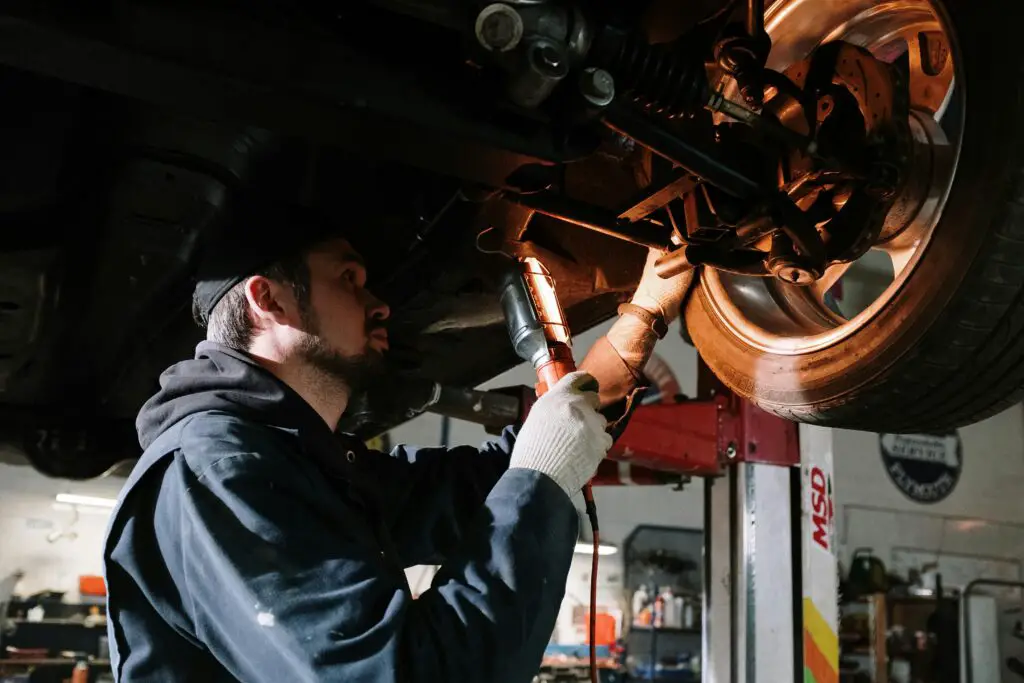Summer is the perfect time for road trips, camping adventures, and long scenic drives across Canada. But before you hit the road, it’s essential to ensure your vehicle is in top shape to handle the heat and extended travel. Extreme temperatures, heavy traffic, and long distances can put additional strain on your car, increasing the risk of breakdowns.
This guide will walk you through the essential summer vehicle maintenance steps, from checking your tire pressure to ensuring your air conditioning system is working efficiently. Proper preparation can save you from unexpected repairs, improve fuel efficiency, and make your summer driving safer and more enjoyable.
1. Check and Maintain Your Tires
Your tires are your car’s only contact with the road, making them crucial for safety and performance.
Monitor Tire Pressure
- Hot temperatures cause air to expand, which can lead to overinflated tires. Conversely, underinflated tires can cause poor fuel efficiency and uneven wear.
- Check your tire pressure at least once a month using a pressure gauge, and adjust it according to your vehicle’s manual.
Inspect Tire Tread Depth
- Worn-out tires increase stopping distance, especially on wet roads.
- Use the “Toonie Test” – if you insert a toonie into the tread and the silver outer edge is fully visible, it’s time to replace your tires.
Consider Summer or All-Season Tires
- If you’re still driving on winter tires, swap them for all-season or summer tires for better grip and performance in warm weather.
2. Test Your Air Conditioning System
There’s nothing worse than getting stuck in traffic on a scorching day with a malfunctioning A/C.
- Turn on your air conditioning and check if it’s cooling effectively.
- If the airflow feels weak or warm, your refrigerant levels may be low, or the system may need servicing.
- Listen for unusual noises—rattling or whistling could indicate a failing compressor or a refrigerant leak.
3. Check and Top Up Fluid Levels
Fluids are the lifeblood of your car, and summer heat can cause them to evaporate or break down faster.
- Engine Oil: High temperatures thin out engine oil, reducing its effectiveness. Check the level and top up or change it if needed.
- Coolant: Overheating is a common summer issue. Ensure your coolant levels are adequate and that the coolant mix is appropriate for your vehicle.
- Transmission Fluid: Helps keep your gears running smoothly. Low levels can lead to overheating and transmission failure.
- Windshield Washer Fluid: Summer driving means more dust and bugs. Keep your washer fluid filled for a clear view.
- Brake Fluid: If your brakes feel spongy or sluggish, check the fluid level and get a professional inspection.
4. Inspect the Battery
Heat can be just as hard on your battery as cold weather.
- Inspect the battery terminals for corrosion and clean them with a wire brush if necessary.
- If your battery is over three years old, consider having it tested to ensure it holds a charge.
5. Replace Wiper Blades and Check Lights
- Wiper Blades: Summer thunderstorms can reduce visibility. If your wipers leave streaks, replace them.
- Lights: Check headlights, brake lights, and turn signals to ensure they are functioning correctly.
6. Prepare an Emergency Kit
Even with the best maintenance, unexpected issues can arise. Keep an emergency kit in your vehicle with:
- Jumper cables
- A flashlight with extra batteries
- A first-aid kit
- Bottled water and non-perishable snacks
- A basic toolset
- Roadside flares or reflectors
For a more comprehensive emergency kit, check out the CAA guidelines
Taking the time to perform these simple yet essential summer vehicle maintenancee tasks can prevent major headaches during your summer road trips. By keeping your vehicle in top shape, you’ll enjoy better fuel efficiency, improved safety, and a stress-free driving experience.
Before setting off on your next adventure, give your car the attention it deserves—because nothing ruins summer fun faster than a breakdown on the side of the highway!

